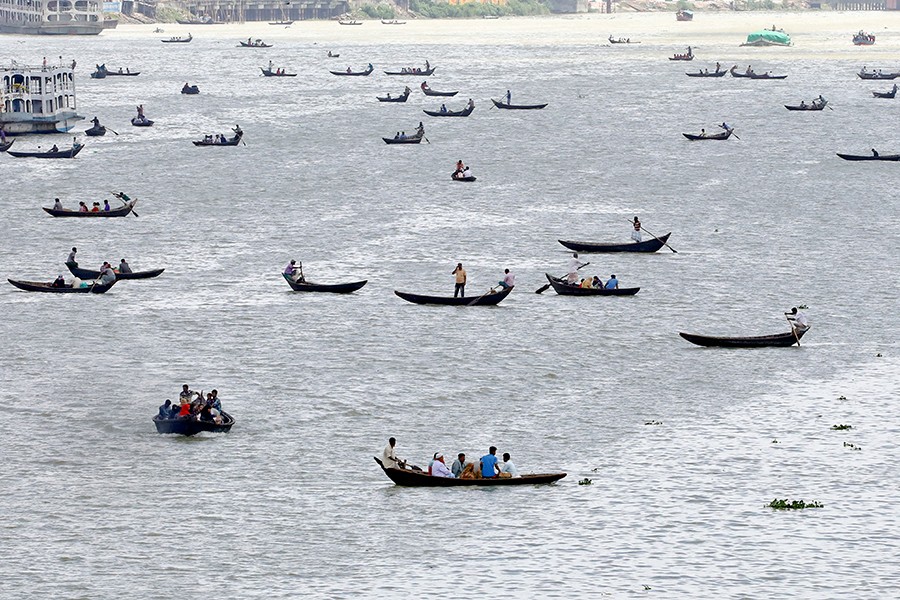Finding the total number of the country's rivers now at around 400 in place of the previous over 700 carries elements of a puzzle. Apart from mainstream flows, these rivers also include tributaries and distributaries. The drop in the number of rivers is replete with a feeling of dread and premonition not experienced normally. The number shows around 300 rivers are missing. The information repeats the fact that scores of the country's rivers and other flows have fallen victim to encroachment, grabbing of foreshores and reckless pollution of river waters. In one sense they exist no longer.
That the rivers and water bodies have been vanishing unabatedly over the last few decades is a widely known fact. They are being made traceless or obscure streams to eventually become non-existent. Few in the authorities involved with rivers appear to have been bothered about knowing the number of the non-existent rivers. Now that the figure is news and is causing distress to many, the so-called deaths of large and small rivers are becoming integral to the country's river scenario.
Scientifically speaking, rivers do not die out. They are literally killed. Except the 'death' of an ancient river in Australia, few such endings have so far been reported. In the cases of Bangladesh and the countries unaware of the importance of rivers to many aspects of life, river disappearances have their roots in blatant ignorance and unscrupulousness. At the end, it is the rivers which have to bear the brunt of these follies. Owing to being a country beset with irregularities and flaunting of power and its patronage by different quarters, the resultantly unguarded rivers emerge as victims. With the lately disclosed discrepancy between the past and present numbers of rivers in Bangladesh keeping people perplexed, the villains must be getting away with their misdeeds. The impact is feared to be felt in the areas of fund allocations leading to their gross misuses and misappropriations. The apprehension is vividly clear. Since there has yet to be an official statistic on the exact number of rivers in the country, funds for clearing river banks of squatters and dredging them are apprehended to undergo bouts of overspending. Plainly speaking, unscrupulous quarters might become tempted to get funds released for rivers and tributaries which have been non-existent since long. Instead of helping salvage the recoverable rivers, the authorities might continue to pour in the state coffers' money into fruitless ventures. Syndicates of river encroachers and grabbers of the surrounding lands have long been active in the river-dominant areas. In a confused situation, caused by the higher authorities' failure to identify the rivers in need of urgent renovation, the racketeers are feared to become more reckless than before.
The High Court of Bangladesh in a historic verdict on February 3, 2019, declared rivers as 'legal entity'. The judgement has given rivers the human status. With this verdict from the High Court, the country's rivers can now enjoy the right to survive. It could now be translated into reality with proper implementation. The country's rivers are passing through bad times. It sounds incredible in a land crisscrossed by myriad rivers and water bodies. The haze created over the exact number of rivers, and their remnants existing in the country has compounded their plight. The HC verdict on the rivers' eligibility to enjoy legal rights is sure to go a long way in ensuring their vibrancy.


